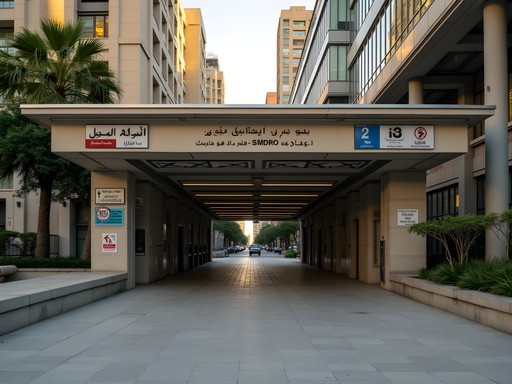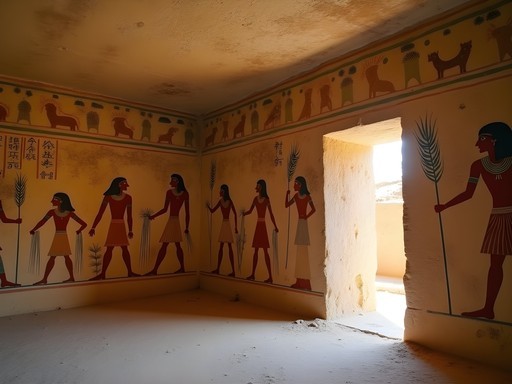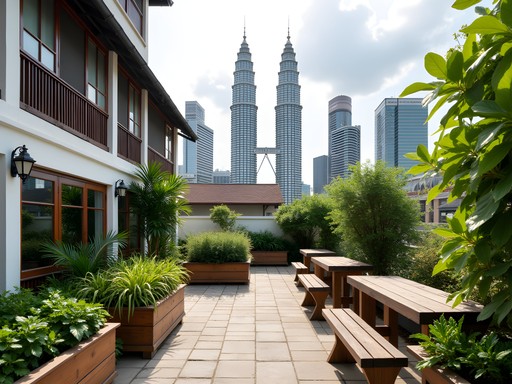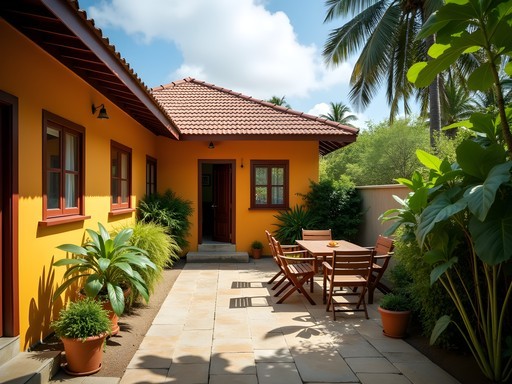Disclosure: This article contains affiliate links. We may earn a commission from purchases at no extra cost to you, which helps our travel content.
Standing in the shadow of the Great Pyramid of Giza, with my weathered Osprey Daylite slung over my shoulder, I couldn't help but smile at the realization that I was experiencing one of humanity's greatest architectural achievements while spending less per day than my monthly internet bill back home. As a physical education teacher with limited vacation time and an even more limited budget, I've mastered the art of maximizing experiences while minimizing expenses. Cairo—with its ancient monuments, labyrinthine markets, and design influences spanning millennia—offers precisely the kind of rich cultural immersion that budget travelers crave. The city pulses with an energy that feels both chaotic and perfectly choreographed, like a complex dance where everyone somehow knows their part. After spending a week navigating this magnificent metropolis on just $30 a day, I'm excited to share how you can experience Cairo's grandeur without emptying your wallet.
Finding Affordable Accommodations with Design Appeal
The secret to budget travel in Cairo starts with smart accommodation choices. I've always believed that where you stay shapes how you experience a city's design and rhythm, but that doesn't mean breaking the bank.
After researching dozens of options, I settled on Dahab Hostel in Downtown Cairo, paying just $8 per night for a simple but clean private room with shared bathroom. What this historic hostel lacks in luxury, it makes up for in authentic charm and location. The 1930s building features beautiful traditional balconies overlooking the bustling street below, with intricate ironwork that frames the urban tableau like living art.
For those seeking more privacy without sacrificing character, numerous budget guesthouses in the Islamic Cairo district offer rooms for $15-20 per night. I spent two nights at Pension Roma, where the rooftop terrace provided breathtaking views of the city's minarets silhouetted against the sunset—a million-dollar view for pocket change.
What surprised me most was how these budget accommodations often showcase Egyptian design elements better than chain hotels. From handcrafted furniture to locally-produced textiles, these spaces tell stories about Cairo's design heritage in ways that feel genuine rather than manufactured for tourists.
My teacher's habit of preparation served me well—booking accommodations 2-3 months in advance secured the best rates, especially since I visited during the popular fall season when temperatures become more bearable.

💡 Pro Tips
- Book accommodations with common areas where you can meet other travelers for potential group tours that split costs
- Look for places that include simple breakfast to save on morning meal costs
- Choose accommodations within walking distance of metro stations to minimize transportation expenses
Navigating Cairo's Neighborhoods on a Budget
As a PE teacher, I'm always conscious of how urban spaces influence movement and well-being. Cairo's distinct neighborhoods each have their own spatial rhythm and flow that can be experienced without spending a dime.
Islamic Cairo, with its medieval architecture and narrow, winding streets, demands a different pace than the wide colonial boulevards of Downtown. I spent hours simply walking these contrasting districts, observing how the built environment shapes human interaction. The Khan el-Khalili bazaar, with its maze-like passages, creates intimate shopping experiences where haggling becomes a dance between merchant and customer.
Navigating between neighborhoods is surprisingly affordable. Cairo's metro system charges just 5 Egyptian pounds (about 30 cents) per ride, making it the budget traveler's best friend. For areas not served by metro, local buses cost even less, though they require more patience and basic Arabic phrases.
My most memorable transportation experience came from riding the Nile ferry (2 EGP/$0.13) between Giza and Old Cairo. This working-class commuter boat provided both practical transportation and a unique perspective of Cairo's riverfront architecture—from crumbling Ottoman-era mansions to sleek modern developments.
I always recommend investing in a good city map despite smartphone navigation being available. There's something about physically orienting yourself that connects you more deeply to a place's design logic. Plus, it doesn't drain your battery or require data!
To truly understand Cairo's neighborhoods, I scheduled my exploration around different times of day. Markets and residential areas come alive in early mornings, while downtown's architectural details are best appreciated in late afternoon light when the golden hour illuminates the city's often-overlooked Art Deco facades.

💡 Pro Tips
- Download the Cairo Metro map to your phone before arrival to navigate without using data
- Travel during off-peak hours (10am-2pm) to avoid the crushing crowds on public transportation
- Learn basic Arabic directional phrases to ask locals for navigation help when needed
Eating Well for Under $10 a Day
One of my core travel philosophies is that budget eating doesn't mean sacrificing authentic culinary experiences. In Cairo, I discovered that the most delicious food often comes from the most humble establishments.
Street food became my primary sustenance, with koshari—a hearty mix of rice, lentils, pasta, and spicy tomato sauce—becoming my go-to lunch at just 10-15 EGP ($0.65-1). At Koshary Abou Tarek, a local institution, I watched how the servers orchestrated their movements with the precision of dancers, layering ingredients with practiced efficiency in a space designed for high volume and quick turnover.
Falafel (called ta'ameya in Egypt) sandwiches for breakfast cost just 5 EGP ($0.30), while a filling fuul (fava bean) sandwich rarely exceeded 7 EGP ($0.45). These protein-rich options kept my energy levels stable during long days of walking—something my PE teacher brain always appreciates.
For dinner, I alternated between street food and small local restaurants serving classic Egyptian dishes. A plate of grilled chicken with rice and salad typically cost 50-70 EGP ($3-4.50), while vegetarian options like stuffed vegetables were even more affordable.
I carried my trusty water bottle everywhere, refilling it at my accommodation rather than buying bottled water. This small habit saved me at least $2-3 daily while reducing plastic waste.
Some of my most memorable meals weren't about the food itself but the spaces where I consumed them. One evening, I splurged on a 75 EGP ($5) dinner at a local restaurant with a rooftop view of Al-Azhar Park. Watching the sunset transform the city's color palette while enjoying simple grilled fish was a design experience more powerful than any high-end restaurant could provide.

💡 Pro Tips
- Look for restaurants where locals eat—prices drop dramatically just one block away from major tourist areas
- Visit Egyptian pastry shops in late evening when many items are discounted
- Carry a reusable water bottle and refill it at your accommodation to avoid buying bottled water
Experiencing Ancient Wonders Without Breaking the Bank
Cairo's ancient sites represent some of humanity's greatest design achievements, and experiencing them doesn't have to drain your wallet if you plan strategically.
The Giza Pyramid Complex, while Egypt's priciest attraction at 240 EGP ($15), is unmissable. I reduced costs by visiting independently rather than with a tour, using public transportation (metro to Giza station, then affordable microbus). Arriving early not only meant cooler temperatures but also allowed me to appreciate the monumental geometry of the pyramids without crowds disrupting the visual impact.
Many travelers don't realize that Cairo proper houses numerous affordable archaeological treasures. The Egyptian Museum charges 200 EGP ($12.50) for foreigners, but students with valid ID receive a 50% discount—a policy I've taken advantage of by carrying my school ID on all international trips. The museum's organization may seem chaotic, but there's a certain beauty in discovering treasures unexpectedly, like stumbling upon Tutankhamun's golden mask in a room you weren't expecting.
The Islamic art museums and Coptic Cairo area charge minimal entrance fees (60-100 EGP/$3.75-6.25) while offering profound insights into design traditions spanning centuries. The Ibn Tulun Mosque (free outside prayer times, small donation for modest dress if needed) provides one of Cairo's most serene architectural experiences, with its spiral minaret and expansive courtyard demonstrating principles of harmony and proportion that still influence design today.
To document these magnificent structures, I rely on my compact camera. Its small size doesn't attract attention, while still capturing the intricate details and grand scale of Egypt's monuments.
Many sites offer combination tickets at reduced rates. For example, the Citadel, Sultan Hassan Mosque, and Al-Rifai Mosque can be visited on a combined ticket that saves about 30% compared to individual entries.

💡 Pro Tips
- Visit major sites like the Pyramids early morning (8am) or late afternoon (3pm) to avoid both crowds and midday heat
- Bring your student ID if you have one—many sites offer substantial discounts
- Allocate your budget to sites with unique experiences rather than trying to see everything
Free and Low-Cost Design Experiences
As someone who views travel through a design lens, Cairo offers countless opportunities to appreciate remarkable spatial experiences without spending money.
The city's historic mosques represent some of the Islamic world's most significant architectural achievements and are generally free to enter (outside prayer times). Al-Azhar Mosque, with its succession of courtyards creating a journey from busy street to serene interior, demonstrates principles of transition and threshold that I've applied to my own modest home renovations.
Cairo's Coptic churches, particularly the "hanging church" (Al-Mu'allaqah), showcase how design adapts to constraints—built atop Babylon Fortress's gatehouse, it exemplifies creative problem-solving through architecture. A small donation of 20 EGP ($1.25) is appreciated but not required.
For contemporary design, I spent hours wandering the Downtown Cairo district, where early 20th-century buildings showcase an intriguing blend of European Art Nouveau and Islamic decorative traditions. The area around Talaat Harb Square features facades with intricate details that reward the observant pedestrian with free visual delights.
One of my favorite no-cost activities was exploring Al-Azhar Park at sunset. While there's a 20 EGP ($1.25) entrance fee, the park provides Cairo's most thoughtfully designed green space, with landscape architecture that references historic Islamic garden traditions while addressing contemporary urban needs. The carefully framed views of Cairo's skyline, with hundreds of minarets piercing the horizon, create living postcards that shift with the changing light.
I documented these design details using my smartphone gimbal to capture smooth video while walking through these spaces. This simple tool helps me create more professional-looking travel content without carrying bulky equipment.
Even Cairo's metro stations offer design interest, particularly Nasser station with its monumental scale and socialist-influenced aesthetic—a reminder of Egypt's complex political history expressed through public architecture.

💡 Pro Tips
- Visit mosques outside prayer times and dress modestly (women should bring a scarf for covering hair)
- Photograph architectural details during early morning when light is soft and streets are less crowded
- Create a self-guided walking tour connecting Downtown's Belle Époque buildings using free online resources
Budgeting Breakdown: How I Spent $30 Per Day
Maintaining a budget of $30 (approximately 470 EGP) per day in Cairo requires intentional planning but doesn't mean sacrificing meaningful experiences. Here's my actual daily spending breakdown from my recent fall trip:
Accommodation: $8-15/day By alternating between hostels ($8/night) and budget guesthouses ($15/night), I kept my average accommodation cost around $10 daily. The key was booking places with character in central locations to minimize transportation costs.
Food: $7-9/day - Breakfast: Falafel sandwich (5 EGP/$0.30) or fuul sandwich (7 EGP/$0.45) with tea (5 EGP/$0.30) - Lunch: Koshari (15 EGP/$1) or shawarma sandwich (25 EGP/$1.60) - Dinner: Local restaurant meal (50-70 EGP/$3-4.50) or street food - Snacks/water: (15-20 EGP/$1-1.25)
Transportation: $2-3/day The metro system (5 EGP/$0.30 per ride) formed the backbone of my daily movements, supplemented by occasional microbuses (5-7 EGP/$0.30-0.45) and rare taxis for early morning/late night travel.
Attractions: $5-10/day I spread major attractions across different days, visiting one paid site daily. Several days included only free sites (mosques, churches, markets), allowing me to allocate more budget to the Egyptian Museum and Giza Pyramids on other days.
Miscellaneous: $1-3/day This category covered small purchases like toilet access (2 EGP/$0.13), tips, and occasional small souvenirs for friends back home.
The beauty of this budget breakdown is its flexibility. On days when I wanted to visit the pyramids, I ate exclusively street food and visited no other paid attractions. When exploring free religious sites, I could afford a slightly nicer dinner with a view.
I tracked all expenses in a small travel journal that I carry on all trips—a habit that helps me stay accountable and provides valuable reference for future travels and for sharing with fellow budget-conscious educators back home.

💡 Pro Tips
- Withdraw larger amounts from ATMs less frequently to minimize transaction fees
- Keep small bills handy for street vendors who often can't make change for large notes
- Build in a small buffer ($3-5/day) for unexpected expenses or special opportunities
Final Thoughts
As my week in Cairo came to an end, I found myself on the rooftop of my downtown guesthouse, watching the sunset paint the city's minarets in shades of gold and amber. The experience reminded me why budget travel has always been my preferred mode of exploration—it forces meaningful engagement with a place on its own terms. Cairo isn't always an easy city, but its complexities and contradictions offer profound lessons in how humans have designed spaces for living, worshipping, and connecting across millennia. By limiting my daily spending to $30, I didn't restrict my experience but rather focused it on what truly matters: authentic encounters, architectural wonder, and the rhythms of neighborhood life. Whether you're a fellow educator making the most of school breaks or a student stretching summer funds, Cairo rewards the budget-conscious traveler with riches that have nothing to do with money. Pack your curiosity, comfortable shoes, and a willingness to embrace the beautiful chaos—Cairo's ancient wonders and modern energy await.
✨ Key Takeaways
- Cairo offers extraordinary cultural and historical experiences that are accessible on a tight budget
- Staying in central neighborhoods saves both money and time while providing more authentic local experiences
- Public transportation and street food are not just budget choices but windows into everyday Egyptian life
- Many of Cairo's most profound design and architectural experiences cost little to nothing to enjoy
📋 Practical Information
Best Time to Visit
October to April, with October-November offering ideal temperatures
Budget Estimate
$25-35 per day excluding international flights
Recommended Duration
5-7 days
Difficulty Level
Moderate

















Comments
oceanbuddy
Did you take public transport to the pyramids or is a tour better? Trying to figure out the easiest way to get there without spending too much.
Paisley Sato
I did both! Public transport (metro to Giza then local bus) is super cheap (~$1) but takes time and can be confusing. Uber directly there is about $5-7 one way - worth it for convenience. Skip organized tours unless you want the historical commentary. The site is easy to navigate independently!
backpackqueen
Just got back from Cairo last month and followed a lot of your tips, Paisley! The $30/day budget is definitely doable. We stayed at Dahab Hostel ($8/night with rooftop views!) and it was perfect. One thing I'd add - the Uber from the airport was way cheaper than the taxis waiting outside. And we found this amazing juice stand near Tahrir Square where fresh mango juice was like 50 cents! My packing cubes were lifesavers in the tiny hostel rooms. For anyone going - don't miss the Egyptian Museum, but go EARLY before tour groups arrive.
wandergal
Dahab Hostel was on my list! Good to hear it's worth it. How was the WiFi there?
backpackqueen
WiFi was decent in common areas but spotty in rooms. I'd recommend getting a local SIM - we paid about $5 for 20GB at the Vodafone shop!
Taylor Moreau
Excellent budget breakdown, Paisley. Even as someone who typically travels for business, I've found Cairo's affordability refreshing during extended stays. One practical suggestion regarding transportation: while the metro is indeed cost-effective, I recommend budgeting slightly more for Uber or Careem when traveling between certain areas, particularly after business hours. The convenience and safety offset the minimal additional expense. For those planning to visit multiple museums, inquire about the combined ticket options at the Egyptian Museum—they're not well advertised but offer substantial savings. And do exchange currency at the airport ATMs rather than the exchange bureaus for better rates.
explorelife
Those street food prices are insane! $2 for a full meal? Sign me up!
globeguy
Which neighborhood would you recommend for a first-timer? The downtown budget hotels sound good but wondering if it's too chaotic?
Paisley Sato
Downtown is actually perfect for first-timers! Yes, it's bustling but very central to attractions and has tons of budget options. If you want something quieter, Zamalek is lovely but pricier. Garden City is a good middle ground.
Casey Andersson
Love seeing Cairo from the budget perspective! I was there last month staying at Four Seasons (work trip, not my money lol) but spent my free days exploring exactly like this. The koshari place you mentioned near Khan el-Khalili was INCREDIBLE - I went back three times! One tip I'd add: the sound and light show at the Pyramids is worth the splurge (about $15-20). It's touristy but magical seeing them lit up at night. And for anyone worried about haggling in the markets, I found writing my max price on my phone and showing it worked better than verbal negotiation. Less back-and-forth and vendors seemed to respect it more.
waveexplorer2733
How safe did you feel walking around Cairo alone? Especially as a woman? Been hesitant to book a solo trip there.
Paisley Sato
Great question! I felt surprisingly comfortable in most tourist areas and downtown during daytime. I did dress modestly (loose pants, shoulders covered) and was cautious after dark - mostly used Uber instead of walking at night. The metro has women-only cars which I used often. Biggest issue was occasional persistent vendors, not safety concerns.
backpackqueen
I went solo last year and had a similar experience to Paisley. Just be street smart like in any big city. Learning a few Arabic phrases really helped too!
wandergal
Just what I needed! Been wanting to see the pyramids without breaking the bank. Saving this for my trip planning!
Jean Wells
A thoughtfully composed guide that effectively balances practical economy with cultural immersion. I would add that the Museum of Egyptian Antiquities offers reduced admission fees during the final hour before closing - an excellent strategy for budget travelers who can plan accordingly. Additionally, the Al-Azhar Park provides a tranquil respite from urban intensity for minimal cost. One recommendation regarding transportation: consider purchasing a Careem credit package in advance for modest savings on multiple rides throughout your stay.
coffeeninja7586
Love the rooftop sunset photo! Which guesthouse was that?
Paisley Sato
That was from Cairo Moon Hotel - about $18/night and the view alone was worth it!
Venture X
Premium card with 2X miles, $300 travel credit, Priority Pass